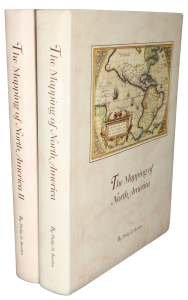Rare Maps and Prints
- World & Celestial
- North America
- West Indies, South & Central America
- British Isles
- British Isles
- English counties
- Large-scale
- Bedfordshire
- Berkshire
- Buckinghamshire
- Cambridgeshire
- Cheshire
- Cornwall
- Cumberland
- Derbyshire
- Devon
- Dorset
- Durham
- Essex
- Gloucestershire
- Hampshire
- Herefordshire
- Hertfordshire
- Huntingdonshire
- Islands
- Kent
- Lancashire
- Leicestershire
- Lincolnshire
- Middlesex
- Norfolk
- Northamptonshire
- Northumberland
- Nottinghamshire
- Oxfordshire
- Rutland
- Shropshire
- Somerset
- Staffordshire
- Suffolk
- Surrey
- Sussex
- Warwickshire
- Westmoreland
- Wiltshire
- Worcestershire
- Yorkshire
- Wales
- Scotland
- Ireland
- Western Europe
- Eastern Europe
- Middle East
- Africa
- Asia
- Australasia & Pacific
- Decorative Prints
- Title Pages
Mr. Philip D. Burden
P.O. Box 863,
Chalfont St. Giles, Bucks HP6 9HD,
UNITED KINGDOM
Tel: +44 (0) 1494 76 33 13
Email: enquiries@caburden.com
What is often described as the first geological map (by geologists) was made by Christopher Packe (1686-1749). He was born 6 March 1686 in St, Alban’s, Hertfordshire, and at nine years old attended Merchant Taylors’ School, London. He graduated from Cambridge University in 1717 and after first returning to St. Alban’s became a practising physician in Canterbury from 1726 to his death in 1749. Many of his letters to his patron Sir Hans Sloane survive today in the British Museum. His ‘Philosphico-chorographical chart of East-Kent’ was published in 1743. It portrayed an area with a radius of 16 miles from Canterbury at a very large scale of about one and a half inches to the mile. His first draft was ready in 1737 but unhappy with errors he erected a scaffold on the top of the tower of Canterbury Cathedral from which he used an azimuth compass and theodolite to complete the work. The completed chart measured 1175 x 1300 mm., and was eventually issued in four sheets. It was accompanied by a book of explanation entitled ‘Ancographia sive Convallium descriptio: in which are … expounded the origine, course, and insertion, extent, elevation and congruity of all the valleys and hills, brooks and rivers (as an explanation of a new philosophico-chorographical chart) of East-Kent, etc’. The book explains what the reader should do to find the bearing of any place from true north, the map being orientated to magnetic north. The declination at the time was 14.5 degrees W.
He originally intended using a smaller scale but because “the more room I gave it, the more distinct, beautiful and useful it would be”, he enlarged it. Packe’s main purpose was to illustrate the draining of water from the land as he put it to “exhibit the system of all the valleys, to show their number connection, extent and descent into their several collections; to set forth how the waters are generated, and how for them the several rills, brooks, branches and channels of the rivers, particularly of the Stour and its Nailbours are formed in their distinct lobes, districts and regions; up from their very springs down to their inlet into the sea”. Subtle hachuring helps to represent the valley slopes and figures indicate the altitudes. The latter were attained by the relatively new science of using barometric pressure. It was Evangelista Torricelli who in 1643 noted the principals of the barometer and Packe used it to note its rise and fall on the tower of Canterbury Cathedral. Extrapolating these figures to the region he mapped produced remarkably accurate figures. The legend describes ‘deep green’ meadows, ‘light green’ downs and ‘brown’ arable land however the map was issued uncoloured. The key states that ‘the lines of light between two setts of Vallies show the Ridge of the Hills that separates them’. Although much of the map details surface physical features there are geological aspects. Different symbols depict chalk and gravel pits and stone and deep clay is identified. The fine engraving was the work of James Mynde (fl.1720-60).
It is an extremely rare map, a search of United Kingdom institutions revealed examples at the British Library and the National Library of Scotland only. Only two auction records for the map could be found in the last 40 years, the last appearance being at Sotheby’s London 25 June 1987 as lot 236 where it fetched £2,750. Both examples lacked the accompanying book entitled ‘Ancographia’ published just prior to the map.
Provenance: The book: Grenville Library ‘duplicate’ with gilt bookplate pasted inside front cover; sold at Sotheby’s London 6 March 1984 lot 441; bookplate of James Hobbs inside front cover. The map: Christies, London 1982. Boud, R. C., ‘The Early Development of British Geological Maps’, in Imago Mundi no. 27 pp. 73-96; Campbell, Eila M. T., ‘An English Philosophico-Chorographical Chart’, in Imago Mundi no. 6 pp. 79-84; Charlesworth, Michael (2019) ‘Packe, Christopher’, in History of Cartography volume 4, part 2, pp. 1090-91; Robinson, Arthur H. (1982) ‘Early Thematic Mapping in the History of Cartography’ pp. 51-2 & 86; Sotheby’s London 25 June 1987 lot 236.
A New Philosphico Chorographical Chart of East-Kent Invented and delineated by Christopher Packe M.D. [with] Ancographia sive Convallium description
SOLD








